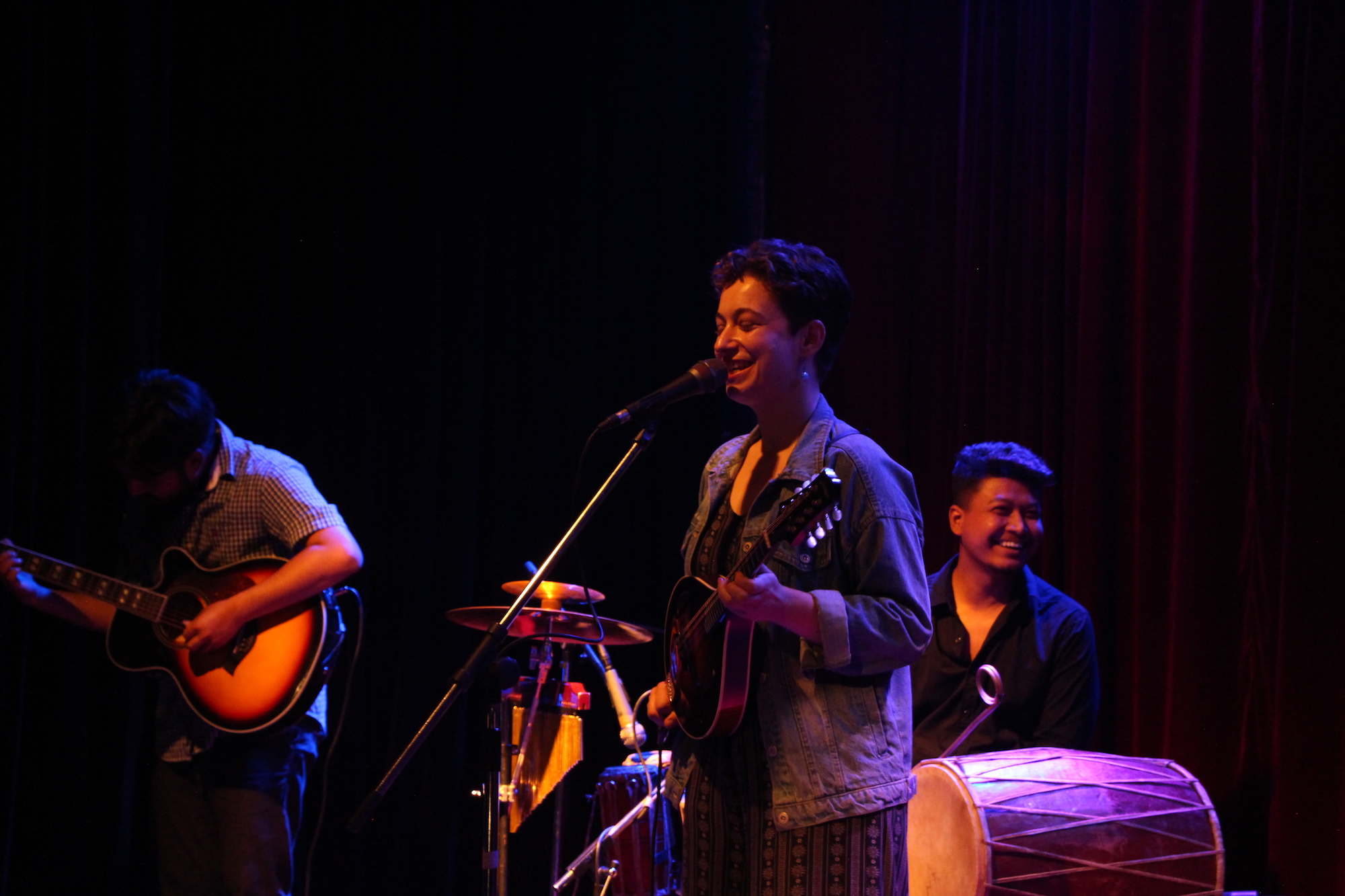In Nepal, East meets West musically
Nepali and American musicians come together to preserve the folk music of their mountainsA year ago in the hilltop town of Kirtipur overlooking Kathmandu, musicians started to experiment with a blend of Appalachian Bluegrass with the mewl of the sarangi from the Himalaya.
Zoe Levitt, a Bluegrass mandolinist and songwriter from the US, and Prince Nepali, a fourth-generation sarangi player and educator, bonded well and established their Nepali-American folk fusion band, Manaslu Blue.

One year later, Manaslu Blue debuted in KatGrass: Bluegrass & Nepali Folk Fusion Concert to a diverse audience of Nepali and international enthusiasts in an evening of high-energy music, dancing, and cheers at Moksh.
Manaslu Blue has Prince Nepali on sarangi, Zoe Levitt on mandolin, Anish Tamang on guitar, Sabin Ghising on flute, Yuson Maharjan on percussion, and Ryan O’Donnell on vocals and guitar (featured guest artist for KatGras).
The musicians are united in their effort to preserve traditional music with members particularly concerned about preserving folk music and their unique instruments like the sarangi, bansuri, and damaha.

“The new generation does not have folk artists to look up to, traditional musicians need to be recognised if we want to preserve our folk tunes,” says Prince Nepali who runs classes in Sarangi Ghar. Nepali is also looking to make archives of traditional songs, including some composed by his great-grandfather.
Guitarist Anish Tamang adds that many younger Nepalis, as well as musicians look up to Western genres, prioritising it over traditional music. This has also meant that there are not as many platforms to learn traditional music.
Manaslu Blue has an upcoming EP which will highlight Nepali folk music and musicians, and help listeners recognise the band members as artists who can inspire new, younger audiences.
Bluegrass and Nepali folk music come from different corners of the world, however, unlike sheet music, both styles are traditional and are learned by ear.

The musicians have to listen to one another and play what feels right to them at the moment. Since everyone in the band is comfortable with improvisation, the band produces something new every time they perform, a unique charm that defines the band’s synergy.
The music alternates between the use of different instruments like mandolin, flute, sarangi, percussion, and guitar as everybody plays in sync as well as spaces out to give every instrument their unique solos and voices.
Fusing folk music with Bluegrass also opens the door to experimentation, diverse collaborations, and unique music. The band plans to introduce this fusion to a global audience, starting with Bluegrass festivals around the globe to surprise different musical communities.
“Nepali bands often target the Nepali diaspora when touring internationally. Manaslu Blue wants to introduce it to a larger audience, like at Bluegrass festivals and folk festivals and beyond, so Nepali folk music gets exposure to different demographics,” says Zoe Levitt, adding that the band is open to collaborating with folk musicians from around the world.

Band manager Akriti Maya, has her job cut out for herself with Bluegrass being a new musical genre in Nepal. She says: “Fusion can be scary, but when they work, it is almost like they are philosophically connected.”
For Maya, folk music is synergetic and works well in courtyards where people from different communities let themselves indulge in the unique mixture of their folk music and dance. At Moksh last week, Americans toe-tapped to the Bluegrass tunes while the Nepalis waved their hands, combining dance steps from both traditions.
Manaslu Blue members bridge the musical distance between the Appalachian and Himalayan mountains. The members are united by their shared love for the music and the traditional instruments that produce the sound.
Ryan O’Donnell, a featured guest of the band, puts it best: “The music is powerful, beautiful, spellbinding – it is a very logical combination.”




